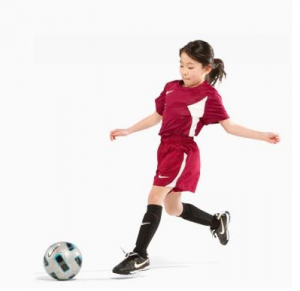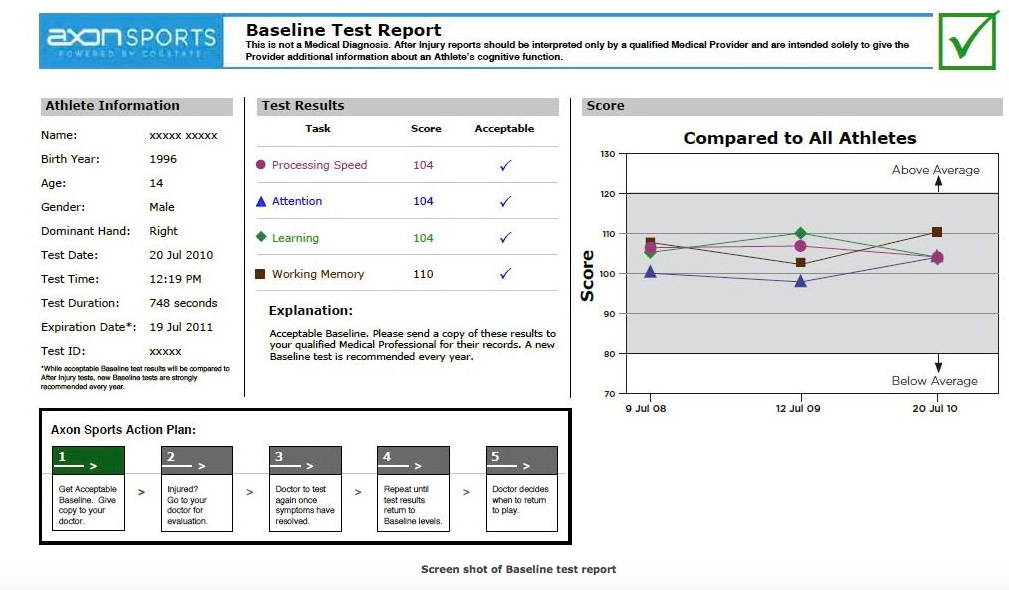Axon Sports Raises Awareness Of Concussion Risk in Youth Soccer
There are 18 million kids playing youth soccer in the U.S. Across the country, boys and girls from ages 4 to 18 are having fun while improving their skills, physical play and competitiveness. But what happens when these kids get concussions?
 That’s the question on the minds of Seattle-based Korrio and Wisconsin-based Axon Sports, who have teamed up to gather information about and raise awareness of concussions in youth soccer. One of the greatest fears in youth sports, concussions scare parents, coaches, and even players. The American Journal of Sports Medicine reports the highest rate of concussions for high school girls occurs in soccer.
That’s the question on the minds of Seattle-based Korrio and Wisconsin-based Axon Sports, who have teamed up to gather information about and raise awareness of concussions in youth soccer. One of the greatest fears in youth sports, concussions scare parents, coaches, and even players. The American Journal of Sports Medicine reports the highest rate of concussions for high school girls occurs in soccer.
Concussions are a brain injury – FUNDAMENTAL COGNITIVE PROCESSING info from Axon Sports
- All concussions are serious.
- Concussions can occur without loss of consciousness.
- Concussions can occur in any sport.
- Recognition and proper management of concussions when they first occur can help prevent further injury or even death.
According to a AxonSports, “A concussion may occur from direct blows to the head, face or neck. This may be a punch, fast moving object such as a baseball, or a clash of body parts such as head-to-head or head-to-knee. Concussion also can occur with collisions between Athletes or the head striking the ground. Indirect trauma can also cause a concussion including whiplash-type jerking movement of the head and neck.”
“The impact to the head, neck or other portion of the body results in the brain shifting inside the skull and knocking against the inner bony surface. This may be enough to cause microscopic shearing of nerve fibers and probably sets off a process of swelling and a series of chemical reactions; this not only affects the way the brain works (e.g. thinking and co-ordination) but makes the brain susceptible to further injury during the period of recovery.”
Concussions are a serious concern for athletes of all ages. The Centers for Disease Control and Prevention estimate that one in ten athletes will suffer a concussion this year, and the actual number is likely higher because many concussions are not diagnosed or reported. Many states are considering new guidelines and protocols to address the incidence of concussions in youth athletes.
According to a recent study, Kids Will Be Kids released in May, 2011, by the American Journal of Sports Medicine, concussions occur in both boys and girls sports. “Results of an 11-year study on concussions indicate that high school girls have twice the rate of concussions as high school boys playing the same sport. While football accounted for the most concussions, girls’ soccer had the second-highest rate. Although it isn’t known why girls have a higher rate of concussion than boys, it is important to take precautions for all Athletes.”
Nationwide Children’s Hospital in Columbus, Ohio, researched youth sports and concussions and discovered surprising statistics on high school soccer injuries. “Heading a ball appears to spectators as one of the most dangerous plays in soccer. However, only 6.6 percent of injuries are caused by this flashy move—and contact with the ball accounted for only 7 percent of concussions, while player-to-player contact resulted in more than 70 percent,” according to the report.

One important tool for treating concussions is cognitive testing of athletes to develop a baseline that can be used to evaluate the results of a head injury. “Baseline testing is growing in popularity as a concussion management tool for soccer leagues and clubs because of its cost effectiveness and ease of administration,” said Gretchen Nuckles, Axon Sports vice president for marketing. “When it comes to caring for a concussed Athlete or determining when an Athlete is ready to return to play, these test results provide qualified Medical Providers with another tool that is often more reliable than an Athlete’s self-reported symptoms.”
“Soccer continues to be a popular sport among all ages, especially high school athletes,” said Dawn Comstock, PhD, Center for Injury Research and Policy (CIRP) principal investigator at Nationwide Children’s Hospital and a faculty member of The Ohio State University College of Medicine. “Targeted prevention education is necessary to reduce injury rates and severity among the millions of young athletes playing this sport.” Korrio recognizes the seriousness of concussions and as a company that has the tools to reach youth players and coaches around the country, they have decided to reach out and help educate coaches, players and parents on concussions.
This new project will blend Korrio’s Playflow sports automation platform, which is expanding rapidly in the national youth soccer community by providing administrative tools for clubs and teams and family-centric social networking capabilities, and Axon Sports’ Computerized Cognitive Assessment Tool (CCAT), an online testing system used by athletes to assist medical providers in providing care after suspected concussions and making return-to-play decisions.
“Industry-wide adoption of concussion management plans for youth soccer teams is still in a nascent stage, and both Korrio and Axon Sports view this partnership as an exciting first step to help accelerate the process,” said Steve Goldman, Korrio CEO. “In the coming months, Korrio and Axon Sports will work with others in the youth soccer community on this important issue and explore ways to make baseline testing a standard part of the registration process. This will offer parents peace of mind, knowing they have taken an essential step in protecting the health and safety of their young athlete.”
“Axon Sports has developed a very simple web-based concussion management tool for youth sports, enabling baseline testing that is quick, easy and affordable,” Axon Sports President and CEO Polly James said. “We look forward to working with Korrio on ways to support clubs and teams that embrace best- practice concussion management planning, while also making online baseline concussion testing more readily available to the youth soccer community.”

Dr. James Moriarty, M.D., Sports Medicine Consultant for Axon Sports and Head Team Physician at the University of Notre Dame, explained the benefits of the CCAT. “Young brains, like young bodies, continue to develop and mature at differing rates until final growth is achieved. We find that children and teenagers will improve cognitive performance in both speed and accuracy on the Axon Sports CCAT to the ages of at least 15 years. That’s why completing an annual Baseline test ensures an accurate and current record of the Athlete’s true ability and aids detection of subtle declines in thinking ability that can occur after a concussion.”
Korrio plans to post relevant information on its website and use its communication channels to educate parents, players and coaches about concussion management, testing and warning signs. For coaches, it’s crucial to learn the symptoms of such head injuries in order to remove hurt players from the game.
“In the coming months, Korrio and Axon Sports will explore the feasibility of integrating Axon Sports baseline testing into Korrio’s Playflow sports automation platform,” Goldman explained. “We believe Playflow’s family-centric social networking capabilities in the youth soccer community can serve as a great tool for medical education and sharing information about concussion risks and management.”
While people typically associate other sports with concussions, soccer players are at risk as kids head the ball, look down when they dribble (leading to collisions), and are injured by hard shots or passes that strike them in the head. The expectation is that the Korrio/Axon Sports program will increase awareness among coaches, parents and players about concussions, including how to recognize symptoms, and encourage clubs and teams to implement concussion management plans.
The Center for Disease Control (CDC) has information on concussions. Their program called Heads Up: Concussion in Youth Sports states the obvious, “It’s Better to Miss One Game Than the Whole Season,” and every parent hopes their child will appreciate this wisdom.

To help ensure the health and safety of young athletes, CDC developed the Heads Up: Concussion in Youth Sports initiative to offer information about concussions to coaches, parents, and athletes involved in youth sports. The Heads Up initiative provides important information on preventing, recognizing, and responding to a concussion.
* Information on concussions from the CDC. Download FACT SHEET for Coaches, FACT SHEET for Players and FACT SHEET for Parents
WHAT ARE THE SYMPTOMS OF A CONCUSSION?
• Headache or “pressure” in head
• Nausea or vomiting
• Balance problems or dizziness
• Double or blurry vision
• Bothered by light
• Bothered by noise
• Feeling sluggish, hazy, foggy, or groggy
• Difficulty paying attention
• Memory problems
• Confusion
• Does not “feel right”
More resources are available at Axon Sports






